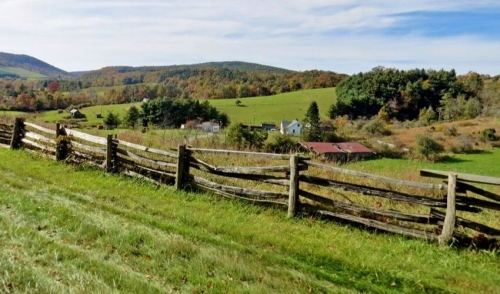
Repair Fencing, Stalls, and Barn Walls
No matter what type of livestock you keep or how many animals you are responsible for, safety and security always need to be top concerns to protect their welfare. Taking steps to repair fencing, stalls, and barn walls is essential to safeguard your livestock, and it doesn’t have to be difficult to keep your property and your animals secure.
Why Repairs Are Needed
All structures are subject to sun, wind, rain, snow, ice, dust, and other natural forces that will eventually loosen joints, warp timbers, or rust wires and hinges. As fences, stalls, and barn walls gradually deteriorate, animals could be injured by splinters or protruding nails or screws. Small holes and gaps can allow rodents or other pests or small predators into a structure where they can cause significant damage, while larger failures of fences and gates can cause complete structural collapse or allow animals to escape. Timely repairs, however, will prevent these mishaps and keep animals, supplies, feed, and equipment safe.
Repairing Fences
Whether you have just a small paddock, larger corral, or extensive pastures fenced off for different herds, it is important to scout the entire length of the fence regularly whenever the property is in use. If the fields are not being used, the fence should still be inspected once or twice annually to manage any small problems before they become larger issues that will be more expensive and take more time to repair. When checking a fence, look for…
- Sagging, leaning, or fallen posts or rails
- Tautness of any wires or extensive rusting
- Splits in posts or rails that may gradually widen and fail
- Sturdiness of the overall structure, particularly near gates and corners
- Gate function, including locks or latches
- Power to electric fences or automatic gates
In addition to checking and repairing the fence itself, also inspect nearby trees and brush to be sure it is not putting pressure on the structure. Large, unsteady tree limbs that overhang the fence should be removed so they will not cause damage if they fall. Similarly, large gaps underneath the fence that may be caused by ground settling, seasonal floods, or shifting sediment should be filled in so no animals could escape under the fence.
Repairing Stalls
The stalls in your barn are intended as safe, secure shelter for your animals, but if they aren’t properly maintained and repaired, they can actually be dangerous enclosures. A stall with broken panels can cause injuries when an animal leans or rubs on the walls, or if the stall door doesn’t work properly, an animal could be trapped if it is necessary to evacuate in case of fire or other emergencies. When inspecting a stall, look for the following potential problems…
- Uneven flooring or holes that could cause stumbling or trips
- Loose boards or popped nails and screws
- Splintering on walls, rails, or sills
- Stiff or blocked windows or gates
- Missing handles, latches, hooks, or other accessories
- Unusable water or power supplies, if applicable
Along with basic repairs, be sure the stall is the appropriate size for the animals it holds. A stall that is too small can create stress or may cause injuries to an animal, or may lead to behavioral problems, while a stall that is too big could increase anxiety if an animal does not feel secure. How much time the animal spends in the stall should also be considered relative to the overall space, as well as the animal’s individual needs and personality.
Repairing Barn Walls
Your barn should protect and shelter not only your animals, but also feed supplies, tools, tack, and other gear and equipment. To do so, its walls must be sturdy and strong, and should be inspected regularly for any potential problems, such as…
- Warped sections or broken boards that may lead to open gaps or holes
- Popped nails or screws that can cause injuries or weaken supports
- Poorly fitting windows that do not open or close correctly
- Stains, fading, rot, or mold that may indicate water leaks or poor drainage
- Sagging gutters, soffit, or rooflines that indicate weak walls
- Faded paint or stain that may need reapplication for the best protection
Walls that provide additional structural support for a corner, loft, or accessory structure should be scrutinized even more carefully, because if they weaken the potential damage could be even more extensive. Outside the barn, vegetation and tall grass near the walls should be trimmed to minimize abrasiveness and keep pests away from the structure to prevent additional problems.
Keeping your fencing, stalls, and barn walls in top condition does require constant vigilance, but if you are alert to potential problems as soon as they appear, any necessary repairs will be less difficult and less expensive than if they were allowed to grow into major issues.
